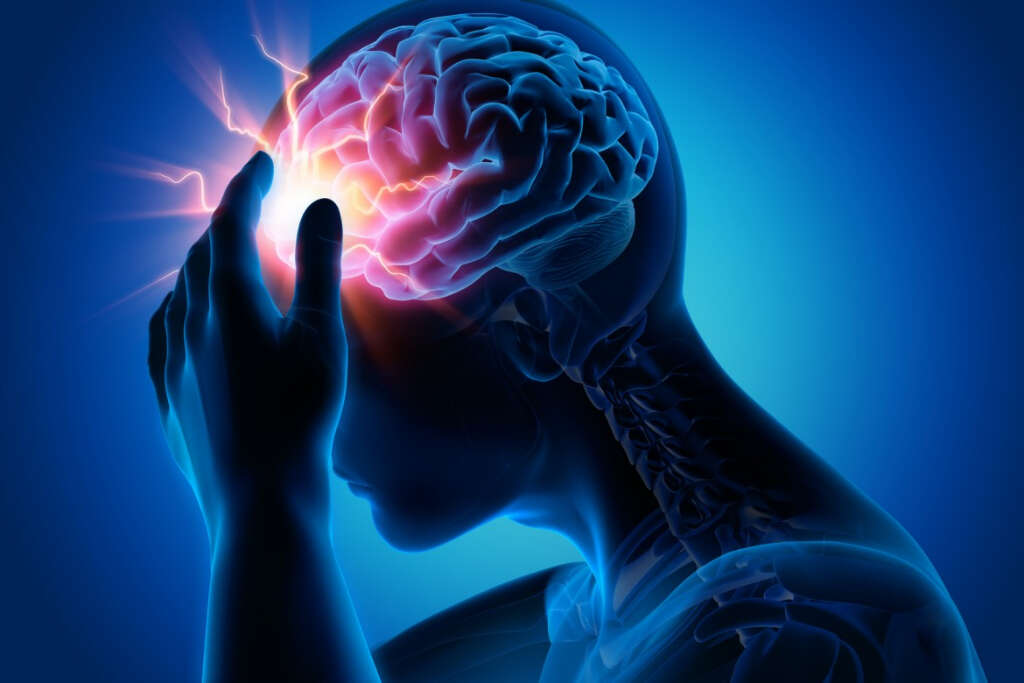10 West Nile Virus Symptoms
West Nile virus belongs in the virus family called Flaviviridae. Mosquitoes transmit the virus to humans and animals, such as birds and horses. Transmission to humans can also happen through organ transplants 1https://ecdc.europa.eu/en/west-nile-fever/facts/factsheet-about-west-nile-fever. The West Nile virus has an incubation period of three to fourteen days, although many people exhibit no symptoms. While most cases of West Nile virus are mild, it can be serious, especially in the elderly and people with compromised immunity.
West Nile virus was first isolated in 1937 in West Nile, Uganda. It is thought to have originated in Africa, where it then spread across the world. Outbreaks are possible in Europe, America, Russia, the Middle East, Asia, and Australia. According to the Centers for Disease Control, there were 2,038 cases in the United States between 2016 and 2017 2https://www.cdc.gov/westnile/statsmaps/preliminarymapsdata/index.html. Below are ten symptoms of West Nile virus.

Symptom #1: Stiff Neck
A stiff neck can be a sign of several different conditions. While a stiff neck may not be a sign of a severe illness, it could be a symptom of a serious infection, such as the West Nile virus.
A stiff neck as a result of West Nile virus infection occurs due to inflammation of the meninges, the tissues surrounding the brain and the spinal cord. The inflammation also causes pain in the areas where it occurs. The resultant swelling also causes stiffness in the neck. A stiff neck due to West Nile virus should be treated immediately since the disease can lead to other serious conditions, including meningitis, coma, seizures, and even death.

Symptom #2: Fever
Fever is a common symptom of West Nile virus, and it may be mild or high. However, a fever can easily be confused as a sign of the flu, especially since several other West Nile virus symptoms, such as headaches, muscle aches, fatigue, and malaise, are also associated with the flu.
Patients should monitor their temperature and any other symptoms closely. If the fever does not seem to go away or additional symptoms like muscle weakness, disorientation, and tremors occur, go to the hospital immediately.

Symptom #3: Headaches
Most of the cases of the West Nile virus are mild and only cause flu-like symptoms. One of those non-specific symptoms is a headache. In the context of a patient with this condition, it is usually difficult to diagnose during the early stages of the disease due to its resemblance to many other conditions.
It is important to know that even though headaches can be nothing to worry about, they can also be a sign of alarm that other conditions associated with the virus are developing, especially meningitis and/or encephalitis.

Symptom #4: Rash
A rash could be a symptom of West Nile virus. This rash will usually appear as raised lesions on a small part of the skin and is considered a mild sign of West Nile virus infection. While the rash usually appears on the torso, in some cases, it appears on other parts of the body, including the neck, head, chest, back, arms, and legs.
The rash may also spread to other parts of the skin. It is worth noting that not everyone who has West Nile virus will get a rash, but this symptom is still a common sign.

Symptom #5: Disorientation
It is common for West Nile virus to cause disorientation. Inflammation of the brain leads to impaired cognitive function, reduced responsiveness, and sleepiness. Disorientation, confusion, and delirium may follow. Once the victim falls asleep, it can be hard to wake them up. The inflammation of the brain may have long-lasting effects, although the severity depends on the individual patient.
If the swelling within the brain continues, the patient could go into a coma. It is, however, worth noting that only about 1 percent of West Nile virus victims get symptoms as serious as this.

Symptom #6: Swollen Lymph Nodes
West Nile virus infection can cause swelling of the lymph nodes in the neck. However, this is not always a sign of West Nile virus. Infections by other viruses or bacteria can cause similar swelling.
In the West Nile virus, the swelling occurs as a result of the immune system’s response to the disease. Inflammation and swelling occur as white blood cells work to destroy the virus. As with other symptoms of the West Nile virus, swelling of the lymph nodes only occurs in some people. Sometimes the swelling is so pronounced that it can be seen on the neck.

Symptom #7: Vision Issues
Serious West Nile virus symptoms may include vision issues, especially acute loss of vision. This happens when swelling within the brain exerts pressure on the optic nerves or affects the optic nerves themselves.
While this loss of vision is usually temporary, in some cases, it can cause permanent damage to the optic and ocular nerves. This can lead to a significant or total loss of vision. West Nile virus may also result in optic neuritis or retinitis, which can cause recurrent pain in one or both eyes.

Symptom #8: Seizures
Tremors, convulsions, or seizures are other possible symptoms of West Nile virus.
These are serious symptoms that occur as a result of inflammation of the brain, a condition known as encephalitis. The inflammation of the tissues covering the brain and the spinal cord (known as the meninges) could also lead to meningitis.

Symptom #9: Malaise
As with many other conditions, the West Nile Virus can cause malaise.
The patient usually complains about feeling unwell and with low energy. This is a non-specific symptom that is associated with many conditions and it is usually seen in the early stages of this infectious disease.

Symptom #10: Paralysis
West Nile virus can lead to a type of paralysis known as acute flaccid paralysis. It is a rare symptom of West Nile virus that mimics polio and may lead to death. Paralysis may affect the muscles of one or more of the patient’s limbs. Paralysis due to West Nile virus is, however, not necessarily permanent, nor does it always lead to death.
It is critical that you don’t ignore symptoms of West Nile virus that go beyond a flu-like condition. Consult a doctor so that you can get tested and receive treatment. This way, the condition can be managed before developing into paralysis or death.












